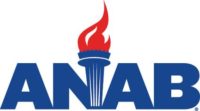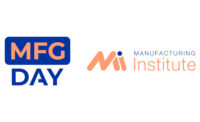The National Science Board released itsScience and Engineering Indicators 2010 report.
This report, produced every two years by the Board-the governing body for the National Science Foundation (NSF) and NSF’s Division of Science Resources Statistics,
is the major authoritative source of U.S. and international data on
science, engineering, and technology and is packed with a wealth of
indicators on research and development (R&D) spending, trends in
higher education and workforce development in science and engineering
(S&E) fields, public attitudes toward science and technology, and
new patterns of international collaboration in research.
In a way, it’s like a report card on U.S. science, engineering, and
technology, comparing U.S. performance with other nations. It also
tells us where the U.S. stands and compares American S&E
performance to that of other nations.
The latest edition of Indicators tells us that the state of U.S.
science and engineering is strong, but that U.S. dominance of world
science and engineering has eroded significantly in recent years,
primarily because of rapidly increasing capabilities among East Asian
nations, particularly China.
OSTP Director John P. Holdren, who also serves as President Obama’s
science adviser, received the 2010 edition of Indicators on behalf of
the President this week and promised to put the report’s insights to
good use in the Federal Government’s policymaking. OSTP, as the lead
policymaking body within the White House for matters related to
science, engineering, and technology, recognizes that good science and
technology policy depends on reliable, comprehensive, and useful data.
Indicators is the premier source of science and technology data and
will enrich this Administration’s policymaking for years to come.
As Dr. Holdren has noted repeatedly, the Obama Administration is
committed to evidence-based policymaking and making data used for
policymaking accessible, relevant, and timely. Indeed, the President
himself has on many occasions reiterated his deep appreciation of the
importance of science, engineering, and technology to finding solutions
to the many challenges that today face the country, including building
a prosperous and innovative U.S. economy of the future, reducing
dependence on foreign energy sources while mitigating the impacts of
harmful climate change, and delivering high-quality health care to
every American.
The Indicators report is factual and policy-neutral. But a number of
Administration policies are already taking aim at the challenges
outlined in the new report.
Just last week, for example, President Obama announced a new set of public-private partnerships in the “Educate to Innovate”
campaign committing more than $250 million in private resources to
attract, develop, reward, and retain science, technology, engineering,
and mathematics (STEM) teachers. This initiative is responsive to data,
presented in Chapter 1 of Indicators, showing that American
15-year-olds are losing ground in science and math achievement compared
to their peers around the world.
Get our new eMagazine delivered to your inbox every month.
Stay in the know with Quality’s comprehensive coverage of the manufacturing and metrology industries.
SIGN UP TODAY!Copyright ©2024. All Rights Reserved BNP Media.
Design, CMS, Hosting & Web Development :: ePublishing


